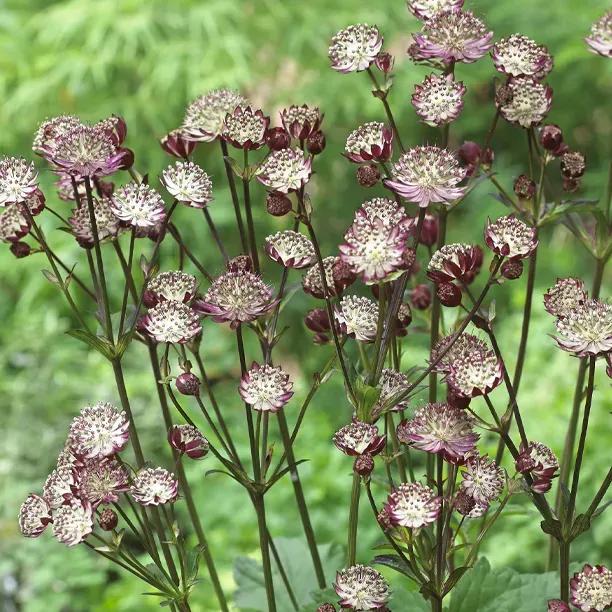Star of Passion Masterwort Plants
The details
Astrantia major
Pot Grown Herbaceous Perennials- Greater Masterwort.
- Dark pink, "pincushion" compound flowers.
- Flowering: June - early Sept
- Foliage: Deep green
- To 60 x 50cm
- Thrives in partial shade
- Any well drained soil
- RHS Plants for Pollinators
Recommended extras
Description
Astrantia major Star of Passion Masterwort Plants
A compact, dappled shade-tolerant perennial with mostly white flowerheads tipped by deep pink in June to September. The tips of the flowerstalks are quite springy, bobbing about in light wind. To 60cm tall.
Browse our range of perennial plants.
Features
- AKA Greater Masterwort or Hattie's Pincushion
- Deep pink, "pincushion" compound flowers.
- Flowering: June - early Sept
- Excellent for cutting & drying
- Foliage: Deep green
- To 60 x 50cm
- Thrives in partial shade
- Almost any soil, good beside water
- RHS Plants for Pollinators
Growing Star of Passion Masterwort
Astrantia thrive in sheltered borders with dappled shade: they only need a little sun to flower well. In the wild, they will grow near the coast in sheltered conditions and cool meadows near streams. They are happy on any well-drained soil enriched with humus.
Water well and allow to dry out after each watering - they do not like their roots sitting in water. Once established, they are fairly drought resistant.
Cut everything back in October after the last flowers fade in order to encourage new foliage. They are great self-seeders, so use deadheading as a "brake": when you want them to spread, don't deadhead! When they fill the space you have planned for them, prompt deadheading will keep them under control and encourage even more flowers.
In Your Garden Design
Astrantia don't need much sun to flower and are friendly plants to have for those with relatively small overlooked urban gardens. They work beautifully grouped together as ground cover or planted under trees: if you have a few apple trees in your garden in a south facing area, they will thrive, working well with comfrey, hellebores and hostas as they enjoy the dappled shade the trees cast. Salvias and geums are excellent plant companions for them and Aquilegia Spring Magic Rose and White Viola Rebecca are particularly effective with them. Try also with ferns and Sambucus nigra Black Lace.
Did You Know
Astrantia's traditional common name is Hattie's Pincushion; several other plants have earned the name Masterwort. Aster is "star" in Latin, referring to the shape of the flower.
They are native to Europe and Western Asia. In herbal medicine they are used to treat ulcers, migraines and colds.
Cultivation Instructions
Position in full sun in well-drained soil enriched with humus planting 60cm apart. Avoid spots affected by winter waterlogging. Water until established, then drought tolerant. Protect from slugs. Suitable for containers.
Apply a general fertiliser and a mulch in spring. Deadhead. Divide mature clumps in spring.


